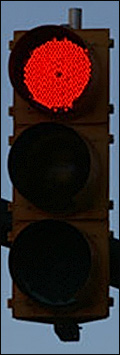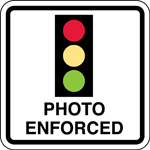Red Light Running Photo Enforcement Program

The numbers for those injured and killed in crashes where a red light is run are sobering.
In 2010, red-light running resulted in 673 fatalities and an estimated 122,000 injuries nationally. (Insurance Institute for Highway Safety, 2012)
None of these statistics take into account the high costs of property damage, medical treatment and productivity losses.
Most red-light running crashes are angle or side impact, which tend to be more severe than rear-end crashes.
The 2007 General Assembly enacted legislation that allows counties, cities and towns to use red light camera enforcement – commonly called photo enforcement.
This legislation provides localities the option of installing and operating red light running camera systems.
In 2012, the General Assembly removed VDOT from the approval process.
The number of intersections where a locality is allowed to operate photo enforcement is based on population.
The legislation allows no more than one intersection per 10,000 residents. See the below Red Light Running Camera (Photo Enforcement) Engineering Safety Analysis Guidelines for a list of 2010 population data.
Before red light running cameras can be installed at any intersection, a locality must complete an engineering safety analysis for the specific intersection, taking into account the intersection’s accident rate, its red light running violation rate and the difficulty law enforcement officer’s experience in safely apprehending violators among other factors.
While not required for intersections located outside of VDOT’s right of way, localities are encouraged to use the same Engineering Safety Analysis Template required for intersections that are located within its right of way.
A comprehensive process of how localities submit requests for intersections located within VDOT’s right of way is included in the Red Light Running Camera (Photo Enforcement) Engineering Safety Analysis Guidelines document.
 Frequently asked questions
Frequently asked questions  (83 KB)
(83 KB)
Red Light running camera (photo enforcement) engineering safety analysis guidelines  (1.4 MB)
(1.4 MB)
Engineering safety analysis template  (1.1 MB)
(1.1 MB)



